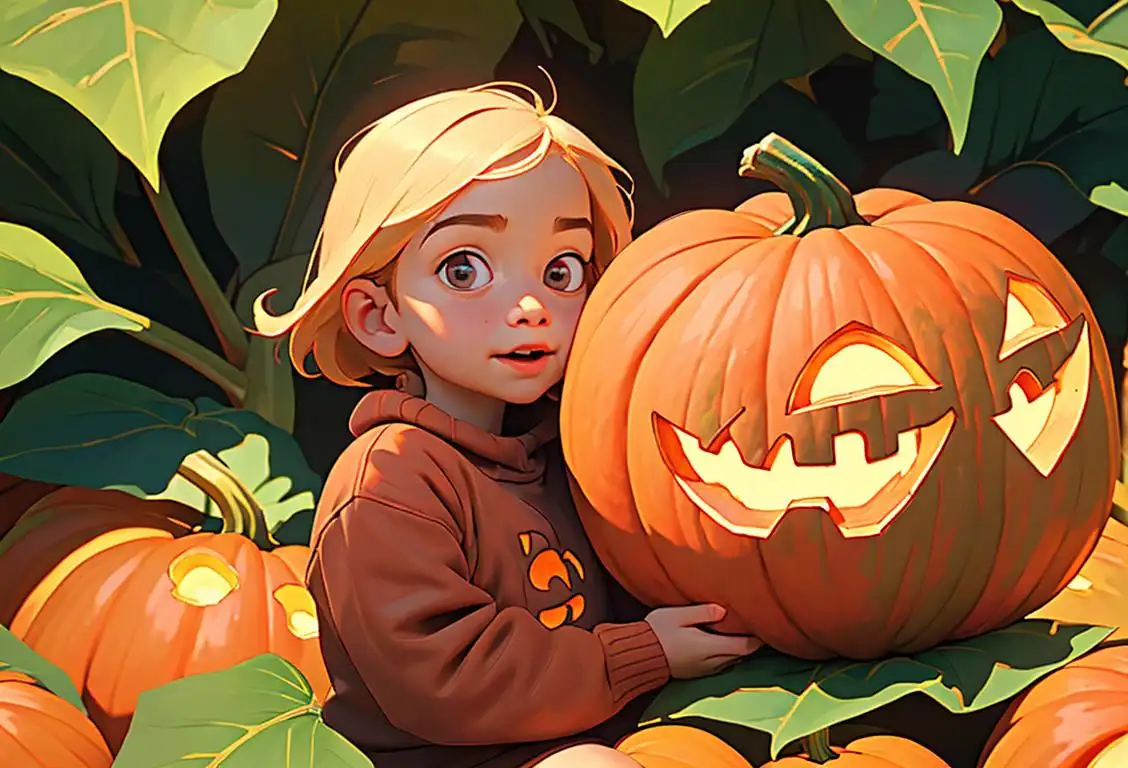National Pumpkin Day

Grab your carving tools and pie recipes, because it's time to celebrate National Pumpkin Day! This national day honors the most pumpkin-loving day of the year, and yes, you're allowed to go a little pumpkin crazy. Not to be confused with Pumpkin Spice Day (that's a whole different level of obsession), National Pumpkin Day celebrates this versatile and nutritious squash in all its glory.
When is Pumpkin Day?
It's national pumpkin day on the 26th October.
The Origin of National Pumpkin Day
As far as the internet can tell us, the roots of National Pumpkin Day are as deep and mysterious as a pumpkin patch in October. What we do know is it has been harvested from the labyrinth of national days, featuring strongly in the chatter-sphere since around the 2010s.
Why October 26?
October 26 was picked as the perfect date to celebrate National Pumpkin Day, because it's just a few days before Halloween, giving you enough time to finalize your pumpkin-inspired costumes, food, and decor. Plus, it's smack-bang in the middle of pumpkin harvest season.
Pumpkin Proliferation
According to our sources, National Pumpkin Day gained notable recognition on 26 Oct 2016, with cyberspace bobbing up over 23,000 online mentions - That's enough to fill a digital pumpkin patch!
Pumpkin Participation
So, what's the best way to celebrate National Pumpkin Day? How about carving a spooky face into a pumpkin for Halloween? Or maybe try your hand at making a homemade pumpkin pie or some nutritious pumpkin soup. Whichever way you decide to observe it, remember: the pumpkin is your canvas. Paint it, cook it, carve it, love it!
History behind the term 'Pumpkin'
5000 BCE
The Early Days
The term 'pumpkin' traces its origin back to around 5000 BCE. It is derived from the Greek word 'pepon,' meaning large melon. These early pumpkins were not like the ones we see today, but rather small and bitter fruits that were primarily grown for their seeds.
Much Later, 16th Century
Exploring the New World
During the 16th century, European explorers like Christopher Columbus and his crew encountered pumpkins while exploring the New World. They were introduced to the vibrant orange fruits by Native Americans who had been cultivating them for centuries.
17th Century
Pumpkins' American Journey
Pumpkins began their journey across America during the 17th century. European settlers embraced the pumpkin as a versatile and nutrient-rich food source. As they spread across the continent, pumpkins became a staple in American cuisine, finding their way into pies, stews, and even bread.
18th Century
Pumpkin Traditions
By the 18th century, pumpkins had established themselves as an integral part of American culture. Pumpkin-related traditions started to emerge, including the carving of pumpkins into lanterns, which eventually led to the creation of jack-o'-lanterns associated with Halloween.
19th Century
Pumpkin as a Symbol
During the 19th century, pumpkins became even more culturally significant. They symbolized the fall harvest season and were often associated with festivities such as Thanksgiving. The popularity of pumpkin pie grew, and recipes started appearing in cookbooks, solidifying pumpkin as a quintessential American flavor.
20th Century
Pumpkin Beyond Food
In the 20th century, the cultural impact of pumpkins extended beyond food. They became a symbol of autumnal decorations, evoking a sense of nostalgia and warmth. Pumpkin patches and pumpkin festivals became popular attractions, where people could enjoy various pumpkin-related activities and celebrate the season.
Present Day
Pumpkin Craze
Today, pumpkins continue to captivate people worldwide. From pumpkin-spiced latte craze to the rise of elaborate pumpkin carving contests, they have firmly cemented their place in modern culture. Pumpkins remain an enduring symbol of autumn, warmth, and the harvest season.
Did you know?
Did you know that pumpkins are not a vegetable, but a fruit? More specifically, they are a kind of winter squash belonging to the family Cucurbitaceae, which also includes cucumbers, zucchinis and melons.Tagged
awareness food fun loved ones rememberanceFirst identified
25th October 2015Most mentioned on
26th October 2016Total mentions
23028Other days
Happiness Day
Bbq Day
First Responders Day
Meatball Day
Trivia Day
Cheese Lovers Day
Biscuit Day
Pumpkin Day
Agriculture Day
Knife Day








